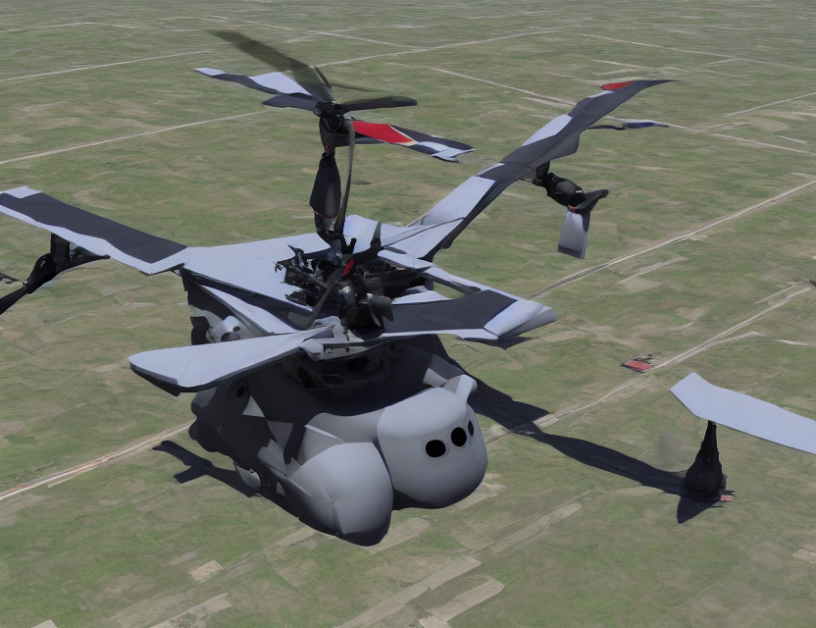In this paper, the authors explore the dynamics of tiltrotor aircraft, which are capable of both helicopter-like vertical takeoff and landing (VTOL) and airplane-like forward flight. The article provides an overview of the current state of the art in tiltrotor technology, including its potential advantages and challenges.
The authors begin by explaining that tiltrotors work differently than traditional helicopters, which have a fixed rotor head that always faces downward. In contrast, tiltrotors have a rotor head that can rotate up to 90 degrees, allowing the aircraft to move horizontally while maintaining lift. This allows tiltrotors to take off and land vertically like a helicopter but also fly at high speeds like an airplane.
The authors then dive into the details of tiltrotor dynamics, including the role of the rotor angle, airspeed, and thrust. They explain that the rotor angle is critical for controlling the aircraft’s pitch and yaw, while airspeed affects lift and drag. Thrust, on the other hand, determines the aircraft’s forward motion.
The authors also discuss the challenges of tiltrotor design, including the need to balance lift and thrust at different rotor angles. They explain that this requires sophisticated control systems that can adjust the rotor’s angle in real-time to maintain stable flight.
To overcome these challenges, the authors suggest using advanced control algorithms and sensor technologies. These include techniques like model predictive control (MPC), which uses mathematical models to predict the aircraft’s behavior and optimize its performance. The authors also highlight the importance of sensor integration, including the use of vision sensors and lidar to improve navigation and obstacle avoidance.
Finally, the authors touch on the potential applications of tiltrotor technology, including search and rescue, agriculture, and military operations. They note that tiltrotors could be particularly useful in these environments due to their ability to take off and land vertically, as well as their high speed and maneuverability.
In summary, this paper provides a comprehensive overview of tiltrotor dynamics and control, highlighting the unique challenges and opportunities of this emerging technology. By understanding the complex relationships between rotor angle, airspeed, thrust, and control algorithms, engineers can design more efficient and effective tiltrotors for a variety of applications.
Tilt-Rotors in Aerial Manipulation and VTOL Literature: A Comparative Analysis



